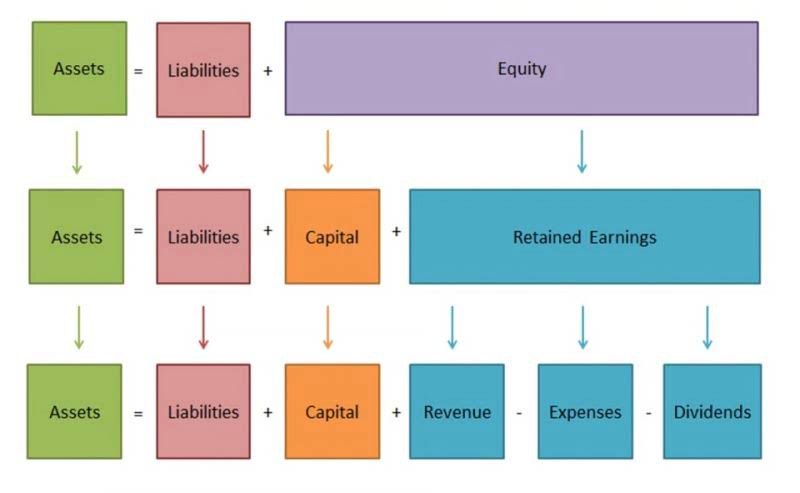
For example, changes in the market, regulatory environment, or competition can affect the business’s revenue, expenses, and cash flow. Businesses should consider these external factors when preparing their master budget to ensure accuracy and reliability. The marketing budget outlines the resources required to promote the business’s products or services and reach the target audience. The cash budget is a plan that projects the business’s cash inflows and outflows for the budget period. It helps businesses ensure sufficient cash to meet their financial obligations, such as paying suppliers, salaries, and taxes. The cost of goods sold budget for Water Wiz is presented in Exhibit 6-13 below.
Video Illustration 6-8: Preparing the budgeted income statement
Creating accurate projections for sales, production, and other key areas can be challenging in that case. Overall, the master budget provides a comprehensive overview of ABC Manufacturing Company’s financial plan for the upcoming year and serves as a roadmap for achieving its financial goals and objectives. By using the master budget as a guide, the company can make informed financial decisions that will help it succeed in a competitive marketplace. By monitoring actual performance against the budget and making adjustments as necessary, the business can ensure that the budget remains relevant and useful for financial planning and decision-making. The final step in preparing a master budget is to review and approve the budget.
A master budget may prove helpful for your business
Since the ending inventory from one quarter becomes the beginning inventory in the next quarter, the company will start each quarter with 20% of the current quarter’s budgeted sales on hand. In the first quarter of year 3, the desired ending finished goods inventory is projected to be 12,700 units. You can gather data for a sales estimate by surveying your sales team, analyzing past trends, or consulting with outside research firms. Once you have compiled a sales budget, you’ll need to develop a production schedule, budget for labor, materials, administration, and other costs, and calculate the cost of goods sold.

Data Analytics Tools

By covering both operational and financial aspects, the Master Budget ensures that all parts of the business are aligned with the overall goals, enabling effective management and strategic decision-making. It helps businesses anticipate future financial needs, manage risks, and allocate resources efficiently. By providing a structured approach master budget to financial management, budgeting enables organizations to achieve their strategic objectives and maintain financial stability. The master budget is the aggregation of all lower-level budgets produced by a company’s various functional areas, and also includes budgeted financial statements, a cash forecast, and a financing plan.
- The income statement reports the organization’s profitability during a specific period.
- Finally, the company will create, initiate, and monitor both long-term and short-term plans.
- Ideally, businesses should start preparing their master budget at least three months before the start of the fiscal year.
- The Master Budget is ideal for comprehensive, long-term planning, while the Flexible Budget offers the adaptability needed for dynamic and unpredictable business environments.
- Assume that Stephanie wants to maintain a desired ending raw materials inventory in the current quarter equal to 20% of the next quarter’s production.
- Businesses that fail to account for cash flow when creating their master budget can quickly face financial difficulties.
Finished Goods Inventory and Cost of Goods Sold Budget
Rolling budgets allow management to respond to changes in estimates or actual occurrences, but it also takes management away from other duties as it requires continual updating. Notice that as one month rolls off (is completed) another month is added to the budget so that four quarters of a year are always presented. Zero-based budgeting begins with zero dollars and then adds to the budget only revenues and expenses that can be supported or justified. Figure 7.3 illustrates the difference between traditional budget preparation and zero-based budgeting in a bottom-up budgeting scenario.
Related AccountingTools Courses
By monitoring actual performance against the budget, managers can identify variances and take corrective action to address any deviations from the plan. They can also identify opportunities to improve efficiency, reduce costs, and increase profitability. However, creating a master budget can be challenging, and businesses must consider ethical considerations, engage stakeholders, and leverage technology to streamline and automate the process. By doing so, businesses can create a master budget that benefits all stakeholders and contributes to the common good. Cloud-based tools provide businesses the flexibility and convenience of accessing their financial data anytime. Cloud-based software can be accessed via the Internet, making it easier for businesses to collaborate and share financial data.
What you will learn to do: Prepare an operating budget

For example, it may show accounts receivable turnover, or inventory turnover, or earnings per share. These metrics are useful for testing the validity of the budget model against actual results in the past. Smaller organizations usually construct their master budgets using electronic spreadsheets. However, spreadsheets may contain formula errors, and also have a difficult time constructing a budgeted balance sheet.
A master budget is the central planning tool that a management team uses to direct the activities of a corporation, as well as to judge the performance of its various responsibility centers. Hopefully, a company uses participative budgeting to arrive at this final budget, but it may also be imposed on the organization by senior management, with little input from other employees. Using the information from the sales budget, materials budget, and production budget will simplify the creation of the cost of goods sold budget. You’ll also need to include budgeted beginning and ending inventory in the cost of goods sold budget.

How Can Businesses Leverage Technology and Software Tools to Streamline and Automate the Master Budgeting Process?
Transparency helps build trust and credibility with stakeholders, including shareholders, investors, and employees. For example, maybe you overestimated your sales and over-spent on ingredients that ended up in the trash. Pull back on ingredient costs next month and make sure your spending is in line with an expected, conservative sales estimate. Here are a couple examples of budgets you’d find inside a master budget (all numbers are hypothetical).
- The operating budget consists of projected sales revenue, the cost of goods sold, and all the separate operating expense budgets you’ll be creating.
- The 11,400 was the desired ending inventory that she produced in quarter 4 of year 1.
- That said, the inventory balance in the predicted Balance Sheet and the Cost of Goods Sold in the projected Income Statement are closely related.
- Managers arrive at the sales budget in dollars by multiplying sales units times sales price per unit.


Comment closed!